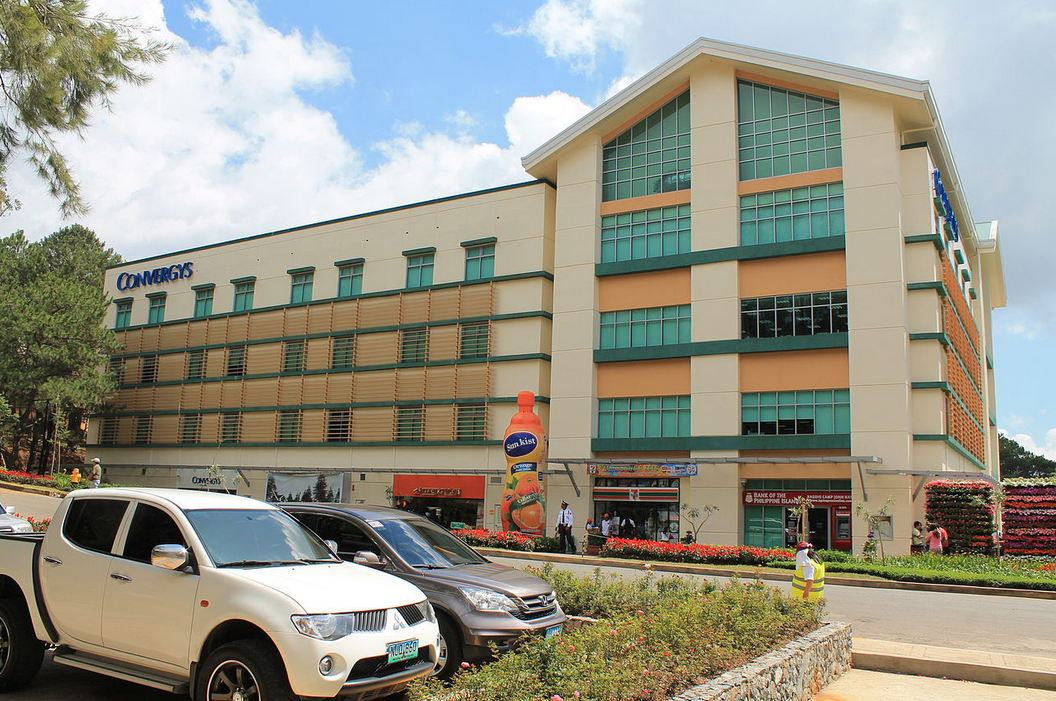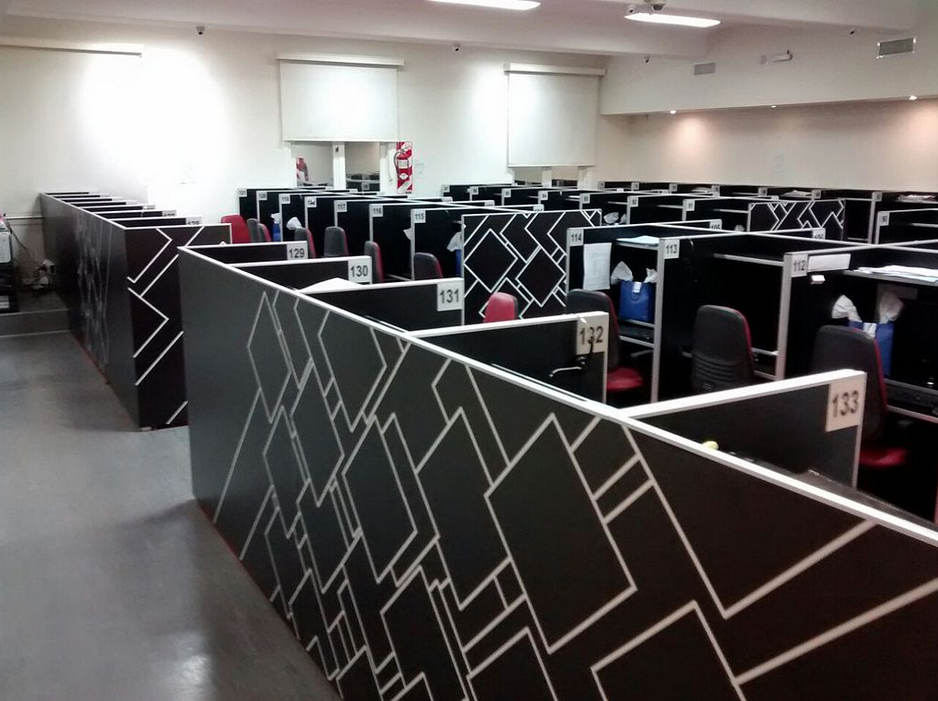One of the most dynamic and fastest growing sectors in the Philippines is the information technology–business process outsourcing (IT-BPO) industry. The industry is composed of eight sub-sectors, namely, knowledge process outsourcing and back offices, animation, call centers, software development, game development, engineering design, and medical transcription. The IT-BPO industry plays a major role in the country's growth and development.
- knowledge process
- technology–business
- it-bpo
1. History
The IT-BPO industry started from a single contact center, the Accenture Global Resource Center, which was founded by Frank Holz in 1992. This marked the beginning of the local BPO industry in the country.
In 1995, the Special Economic Zone Act, thus establishing the Philippine Economic Zone Authority, was passed by the Philippine Congress. This Act provided lower area requirements for developments and tax incentives, which consequently attracted foreign investors.
In 2001, a US-Based outsourcing center called the "People Support" had its operations moved to the Philippines, generating 8,400 jobs for the country.
In 2003, the Convergys Corporation opened up two more call centers in the Philippines. It was at that time when Jack Freker, the president of Convergys Corporation, announced the incorporation of the Philippines in the revenue generation plan and the global expansion of the company. In 2005, accounting for 2.4% of the country's GDP, the Philippine acquired over 3% of the global BPO market. A year after, with ePLDT Ventus leading in the BPO industry, domestic economy increased by 5.4% and 11,000 more people were employed. In 2010, the Philippines was then declared the world's BPO capital. From this point, the BPO industry continued to grow and generate more revenue, with the industry providing the most job opportunities in the private sector.[1]
Since the 1980s, unemployment rate stayed between 8-11% in the Philippines. Even if the economy did have some growth, there was always the problem of job generation. The BPO industry has the most substantial contribution to economic growth, yet it only employs 1% of the labor force. The MTPDP (Medium-Term Philippine Development Plan 2004-2010) has set a target to create "1.5 million jobs a year between 2004 and 2010, or a total of 10 million jobs by 2010." Though the government came short of this success, in 2006 the government was able to identify nine employment-generating factors and these are cyber services, aviation, agribusiness, health services, mining, creative industries, hotels and restaurants, medical tourism and overseas employment. The BPO sector only accounted for 0.075% of the GDP in 2000 but rose to 2.4% in 2005 which indicated a great potential for generating employment. In this sector alone, it reached a staggering one million workers by 2010 and accounted for 27% of all new jobs.[2]
2. BPO Setups (Captive Markets and Offshoring/third Party Outsourcing)
Due to the lower cost of producing specific goods or services in another country, outsourcing has become a common business strategy for many multinational firms. There are two common practices of outsourcing and these are using third party outsourcing or a captive market. These two differ based on the level of risk management, cost effectiveness or the need for managerial control. In the Philippines Captive Markets seem to be gaining some growth although the economic landscape still has third party holding the majority industry presence. This is due to the fact that in recent cases of crises there have been observations on positive growth for third party outsourcing firms as opposed to captive markets. This event lead to the perception of captive markets as being less efficient than that of third party outsourcing.[3]

2.1. Third Party Outsourcing
Project Based Outsourcing
This is primarily used for business activities with irregular frequencies or one-off projects. The usual costing method makes use of time and material costs as variable costs and the fixed costs[4]
Dedicated Development Center
This is primarily used in business cases when there are hanging requirements. In this specific model it could be used for some long-term goals for developing technology or software. This is preferred when resource requirements are lower in the outsourced country than the home country hence developing a comparative advantage. The customers (multinational firms) are charged for fixed fees, which are the wages of full-time employees.
2.2. Captive Markets

This set up is preferred when core or crucial business activities are needed to be run at cheaper costs. The rationale for employing such a setup is to cater to long term strategic plans involving high managerial control. In this case there are two major ways of setting up a captive market and these are the DIY or 'Start From Scratch' model and the Build Operate Transfer model.This way, the business practices and operations are still run within and by the firm which mitigates risk of disclosure of sensitive information. In the Philippines you have examples of these set ups such as American Express, JP Morgan, Wells Fargo and the currently growing Capital One which are both American based multinational companies.[4]
Start from Scratch Model
The usual flow is for the company to develop all its resources in the new designated area or country of operations. This involves the beginning of the model which is the purchasing of property and equipment and due diligence lasts up to the point of running the BPO center itself. The acquisition of property and equipment is done by contacting a third party liaison in the country of operation. This model is preferred by the companies that have high levels of market knowledge and analytics.[4]
Build Operate Transfer Model
In this model, the practice is to contact a 3rd party vendor in order to develop a contract in which the vendor is the one who develops the property, sources the employees and manages the BPO center for the first designated period or amount of time. After which the company who contracted the vendor comes in and takes over the operations. The common practice is to have managerial and training staff of the company join at some midpoint of the period of the vendor's development to have specialized training in order for the employees to meet company standards.This model is preferred by companies that do not have any specialized expertise in the new country of operations hence needing a local partner or vendor to assist with market entry strategies.[4]
3. Growth and Impact
With the Philippines being the 39th largest economy in the world, the country continues to be a promising prospect for the BPO Industry. Just in August 2014, the Philippines hit an all-time high for employment in the BPO industry. From 101,000 workers in 2004, the labor force in the industry has grown to over 930,000 in just the first quarter of 2014.[5]
Growth in the BPO industry continues to show significant improvements with an average annual expansion rate of 20%. Figures have shown that from $1.3 Billion in 2004, export revenues from BPO has increased to over $13.1 Billion in 2013. The IT and Business Process Association of the Philippines (IBPAP) also projects that the sector will have an expected total revenue of $25 Billion in 2016.[5]
This growth in the industry is further promoted by the Philippine government. BPO is highlighted by the Philippines Development Plan as among the 10 high potential and priority development areas. To further entice investors, government programs include different incentives such as tax holidays, tax exemptions, and simplified export and import procedures. Additionally, training is also available for BPO applicants.[5]
4. Trends in the Industry

With the Philippines BPO industry getting more competitive the same trends can be forecasted to occur in the country as with the rest of the world. Arguably it is in the best interest of BPOs in the country to adapt new practices and leverage technologies to keep up with the pace and meet the evolving demand of clients. The following are the predicted industry trends for the year 2015:[6]
4.1. Better Information Security
Security breaches threaten outsourcing industries as the nature of the work involves handling sensitive client information. With 2014 ending in a security breach of Sony pictures' security, businesses are making security a top priority in order to mitigate the negative effects on the reputation of outsourcing firms brought about by security breaches.
4.2. Strategic Balanced-Shore Outsourcing
To address issues such as schedule conflicts between service providers and clients, outsourcing firms are starting to provide a more flexible operation scheme in the form of balanced-shore outsourcing (a combination of at-home, on-site, nearshore, onshore or offshore outsourcing solutions) in order to meet their needs.
Given the rising popularity of the different outsourcing firms in the country, the need for more talent on digital advertising is needed by these firms to expand their customer base and keep customer loyalty with their firms. Recently the common practice of multinational companies, the customer to the outsourcing firms is to now have short term contracts with the local outsourcing firm of a designated country to keep up their efficiency and to grab possible price reductions when availing of outsourcing services.
4.4. Popularity of Cloud-Based Software
In terms of technology, another practice that is now being more commonly applied is the use of cloud based software to store data. With the trend of cloud based software growing in number and popularity, the trend of BPOs adapting these programs to store data is seen to continue proportionally with the increase. This is because such practices, if adapted would mitigate the cost and risk of having to keep and maintain large data storing hardware.
5. Future Outlook
For the year 2016, The BPO industry of the Philippines is projected to experience an overall positive growth rate. Activity in the industry appears to be robust enough such that the industry's projected total income range would reach $20 to $27 billion by 2016 and $40 to $55 billion by 2020. The Industry, currently holding about 1 million directly employed employees, is also projected to increase employment by providing a total of about 1.3 to 1.5 million new jobs, which would consist of employees directly and indirectly employed.[7][8][9]
In terms of the Philippines credit ratings, there has been statements that the current and future credit rating would hold, if not increase, this being driven by the constant economic growth the country is enjoying which a good portion is attributed to being the contribution of the BPO industry.[10]
For the local industry sectors, the leading subsector are those of voice functions or the call centers. According to the article, Philippines BPO industry has now taken over India’s spot as the leading call center country and due to this event, the subsector is projected to continue holding the largest contribution to the industry's growth in the following years. According to a UA&P (University of Asia and the Pacific) industrial economist, the voice sub sector is projected to continue a robust growth rate until 2020, but is projected to slow down or degrade by the end of that year due to the speculation of the BSP (Bangko Sentral ng Pilipinas, Philippines Central Bank) that a shift in reliance from voice sources of information will occur turning the demand to non-voice information sources.[7]
5.1. Forecasted Threats
Though the industry outlook is positive on the overall, there remains the issue of forecasted threats caused by policy shifts to be undertaken by the country. One said issue is that of the proposal of changes for tax holidays, the temporary reductions or eliminations of taxes. The proposal discusses the reduction of tax holidays to be implemented for the BPO industry with the compromise of having their income tax from 30% to 15%. For the next 15 years. According to Industry characters, the threat here is that, though tax costs would decrease the change, even if diminished to 10%, might serve as a deterrent for foreign companies to enter the Philippine market due to a reduction of the country's competitive advantage.[7] Other key challenges to the BPO industry are the lack of well-trained employees as well as high turnover rates, the rate at which employees are replaced, which is said to reach as high as 50% of employees in the industry during 2014.[11]
5.2. Opportunities
Though the shift in demand of voice information is an issue to be faced by the industry, this has already been forecasted since 2014. The industry is also projected to shift with the demand in terms of having new firms enter the country or expanding the services provided by having KPOs or Knowledge Process outsourcing which could then cater to new demand and fulfill a wide set of roles. These roles would be as follows: Market research, Fraud analytics, Equity research and investment, banking Insurance and actuarial Engineering services, Web development, Data integration, Project management Research and development, Medical transcript preparation and legal processes.[11]
6. Issues
6.1. Health Issues

The call/contact centers, being the largest sub-sector in the Philippine BPO industry, have been a major subject on a case study on health and working conditions.[12] Some commonly identified health problems are as follows: employees experience back and shoulder pains, due to the workstation setups and monitor levels, several have complained about experiencing throat irritations due to dealing with multiple calls a day coupled with a high stress work environment and concerns regarding the employees' hearing being damaged due to most of these workers being exposed to higher noise levels.[13]
There have also been some negative effects to the psychosocial aspect of health with regard to these call/contact center workers. There exists multiple job stressors in the workplace such as irregular work schedules interfering with social and family life, irregular hours causing trouble with transportation regarding safety and availability of such mediums and fast-paced workloads. The case study addresses that these psychosocial stressors may also be a major cause or amplifier with regards to the health issues stated above.[13]
6.2. Political Issues
One of the major issues concerning the industry, especially in light of the upcoming 2016 Presidential elections, is the credit that presidential candidate Mar Roxas is being given with the growth of the industry.[1][14][15] Current President Noynoy Aquino said that "I understand it has only been very, very recently that it has joined this bandwagon. It does not come as any surprise, then, that Mar is now known as the 'Father of the BPO Industry in the Philippines'."[14] The industry boom in the early 2000s is heavily credited with Mar Roxas' contributions to the industry during his tenure as the secretary of the Department of Trade and Industry from 2000 to 2003. It is said that his lobbying for the revision of Republic Act 7916 to include floors in buildings where BPO companies operates to be considered as special economic zones, exempting the companies from national and local taxes and only having to pay 5% of their gross income as tax,[1] along with establishing the Contact Center Association of the Philippines in 2001 that aims to promote the country as the go-to destination for outsourcing services,[15] are turning points for the industry's boom. Mar Roxas made significant contributions to the industry, but the industry's growth and development would not have been possible if not for the numerous investors and the workers in the industry itself. There are several key people who also helped in the growth and development of the industry, to name a few:
Fidel V. Ramos for his approval of RA 7916, the establishment of the Philippine Economic Zone Authority (PEZA) which considered IT Parks as special economic zones, encouraged foreign investment in the industry by providing subsidies for infrastructure development and tax exemptions.[15][16]
Frank Holz for developing the Accenture Global Resource Center in Manila in 1992 which helped the local IT-BPO industry thrive.[15][17]
6.3. Economic Issues
The BPO industry is the fastest growing sector in the country and is expected to overtake OFW remittances in 2017.[18] Because of this rapid growth, the question arises whether or not this growth is inclusive. Negros Occidental Governor Alfredo Marañon Jr said that IT will close the gap between the rich and the poor: "65% of our population is below 35 years old. Make your future bright. I believe that IT is the answer to your future."[18]
However, a 2012 report by the Asian Development Bank notes that the growth in the BPO industry has barely trickled down to most of the Philippine population.[19] The report notes that there is only a weak link between the industry's growth and the development of the country mainly because of the high unemployment and underemployment rates; the BPO industry was the fastest growing sector from 2005 to 2012 but only took in 1% of the labor force.[19] ADB Philippine Country Senior Economist Norio Usi notes in the report that the industry only hires college graduates, leaving little to no chance for people with moderate skills and no college degrees to take part in the industry's growth.[19]
Despite the country's abundance of English-speaking, young college educated work force, the country's poor infrastructure and slow internet connectivity also negatively influences prospective foreign investors' decision in investing in the country's growing BPO industry.[20]
The content is sourced from: https://handwiki.org/wiki/Finance:Business_process_outsourcing_in_the_Philippines
References
- "A history of the BPO industry in numbers". http://www.rappler.com/brandrap/stories/98207-bpo-philippines-timeline. Retrieved 2015-11-10.
- Magtibay-Ramos, Estrada & Felipe (2007). "An analysis of the Philippine Business Process Outsourcing Industry". ERD Working Paper 93.
- "Global Offshore Captive Landscape and Trends: Focus Geography - The Philippines - Everest Group Research". https://research.everestgrp.com/Product/EGR-2012-2-R-0661/Global-Offshore-Captive-Landscape-and-Trends-Focus-Geography-T. Retrieved 2015-11-10.
- "Outsourcing Vs. Captive Operations Business Models". http://www.streetdirectory.com/travel_guide/136720/software/outsourcing_vs_captive_operations_business_models.html. Retrieved 2015-11-10.
- "The Philippines – Poised for Growth Through BPO". http://trendline.dcrworkforce.com/the-philippines-poised-for-growth-through-bpo.html. Retrieved 2015-11-10.
- "Top Outsourcing Trends for 2015". http://teledevelopment.com.ph/top-outsourcing-trends-2015/. Retrieved 2015-11-10.
- "The future of the BPO/KPO industry". http://www.mb.com.ph/the-future-of-the-bpokpo-industry/. Retrieved 2015-11-10.
- "Bright prospects for BPO industry". http://www.philstar.com/business/2015/02/10/1421942/bright-prospects-bpo-industry. Retrieved 2015-11-10.
- "BusinessWorld | Growth prospects for the BPO industry". http://www.bworldonline.com/content.php?section=Finance&title=growth-prospects-for-the-bpo-industry&id=107125. Retrieved 2015-11-10.
- "BPO industry seen sustaining growth target". http://www.mb.com.ph/bpo-industry-seen-sustaining-growth-target/. Retrieved 2015-11-10.
- "BPO in the Philippines Could Jumpstart Economic Growth - ASEAN Business News". http://www.aseanbriefing.com/news/2014/10/07/future-philippines-bpo-industry-jumpstart-economic-growth.html. Retrieved 2015-11-10.
- "According to study: Call enter agents prone to HIV-AIDS". Philippine Star. http://www.bpowap.org/tag/bpo-health-problems/. Retrieved 2015-11-10.
- "BPO Workers Association of the Philippines (BWAP) » Tag » bpo health problems". http://www.bpowap.org/tag/bpo-health-problems/. Retrieved 2015-11-10.
- "Aquino hails Roxas' role in growing PH IT-BPM industry". http://www.rappler.com/business/industries/174-outsourcing/108325-aquino-speech-international-it-bpm-summit-2015. Retrieved 2015-11-10.
- "8 People who Helped Build the Philippine BPO Industry". https://www.kalibrr.com/advice/2015/06/a-look-back-8-people-who-helped-build-the-philippine-bpo-industry/. Retrieved 2015-11-10.
- "Special Economic Zone Act". http://www.peza.gov.ph/index.php/about-peza/special-economic-zone-act. Retrieved 2015-11-10.
- "Frank Holz: Executive Profile & Biography - Businessweek". https://www.bloomberg.com/Research/stocks/private/person.asp?personId=23855018&privcapId=22230809. Retrieved 2015-11-10.
- "BPO revenues to overtake OFW remittances in 2017 – IT expert". http://www.rappler.com/business/industries/174-outsourcing/97586-bpo-revenues-overtake-ofw-remittances. Retrieved 2015-11-10.
- "Inclusive growth in Philippines? Not with BPO, remittances". http://www.rappler.com/business/3690-inclusive-growth-in-philippines-not-with-bpo,-remittances. Retrieved 2015-11-10.
- "The Philippines: The New BPO Capitol of the World?". http://www.aseanbriefing.com/news/2015/10/21/the-philippines-the-new-bpo-capitol-of-the-world.html. Retrieved 2015-11-10.
